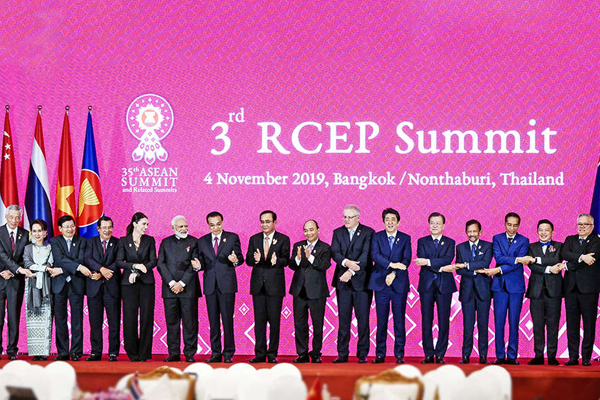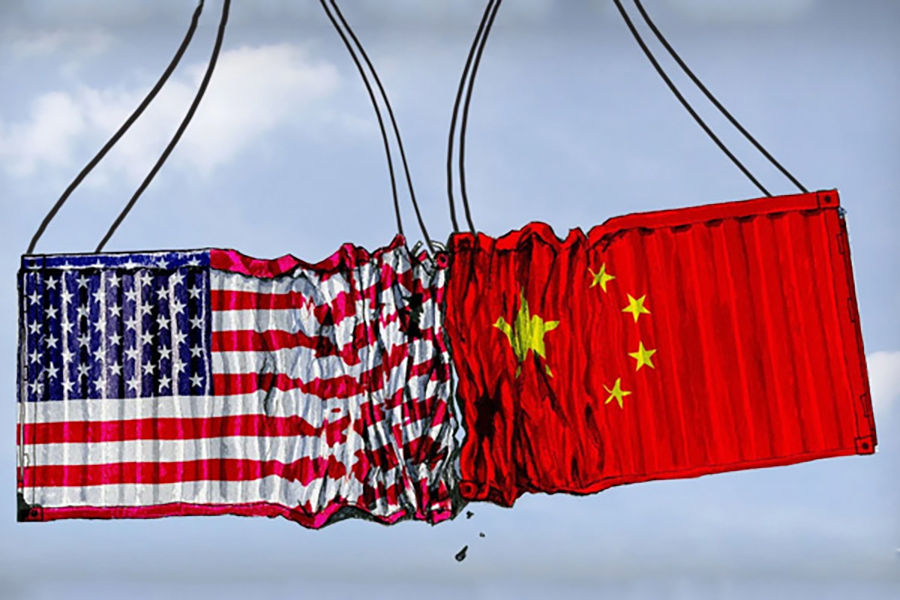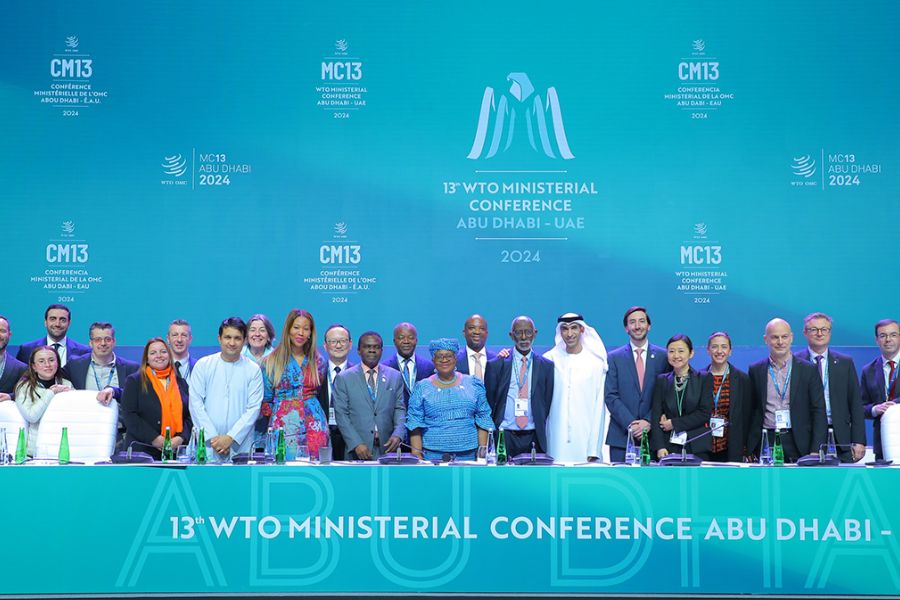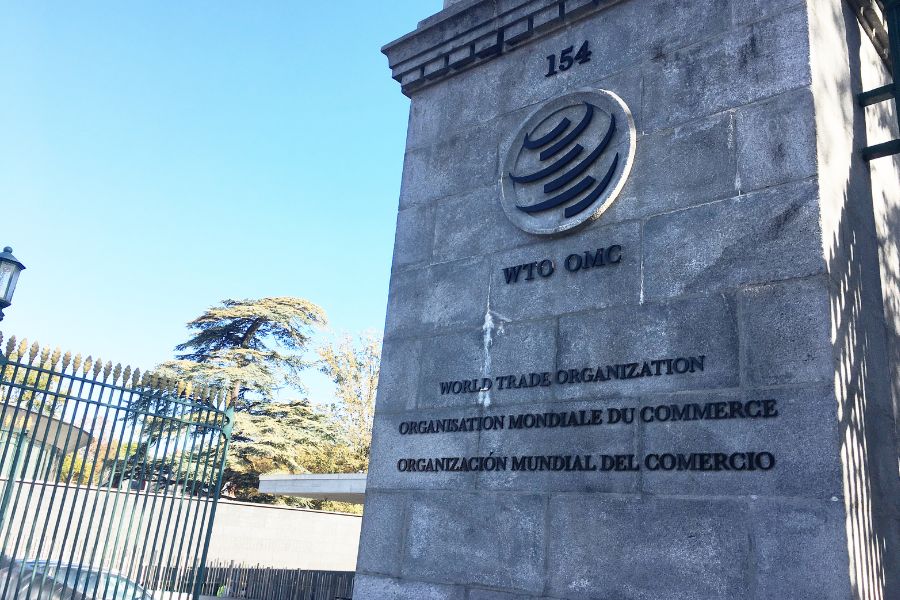India & RCEP: New equations after COVID-19?
• Recently the active fifteen members of RCEP urged India to re-join the trade pact. During the 29th RCEP meet, held through video conferencing in the third week of April, current members have said that in the backdrop of COVID 19, economies are in uncertainty and unavoidable chaos.
• From 2018 to 2019, India’s imports from RCEP declined by US$ 10 billion, with current trade balance at negative of US$ 101.5 billion. India’s exports to RCEP countries surged by 10.1% in last five years, whereas imports surged by 7.2% signalling that there is a decline in the dependency of India.
• Countries like Japan, USA, and South Korea, which have so far been dependent on China, are eyeing India to shift their manufacturing base post the COVID-19 period.
• India has provided a big basket of essential drugs and life-saving kits, and for the same reason, most of the global leaders have expressed their gratitude to India.

Global economies are in great distress as majority of the economic activities are at halt and business transactions have been enervating due to the ubiquitous influence of COVID-19.
Even the world’s most developed nations like US, UK, Germany, France, Russia, Canada and Italy are struggling to cope up against the fatal effects of Coronavirus. India, on the other hand, as a developing nation, is trying to control the ill effect of this pandemic, not only within the economy, but also at a global level.
Recently the active fifteen members of Regional Comprehensive Economic Partnership (RCEP) urged India to re-join the trade pact. During the 29th RCEP meet, held through video conferencing in the third week of April, the current members have said that in the backdrop of COVID-19, economies are in uncertainty and unavoidable chaos. Thus, RCEP nations have stated that they would welcome India’s return to the negotiating table for entering the trade bloc, which will help them withstand this pandemic phase.
In November, during the RCEP meet, India left the mega trade deal citing several reasons. One of the prime reasons for India’s exit, was its domestic interests with respect to dairy and manufacturing sectors. E-commerce, services and trade remedies were among other key areas of concern that failed to find satisfactory redressal. In addition, India didn’t get any credible assurance on market access, services mobility and non-tariff barriers. The active 15 members have given India a window of one year to reconsider its decision with a scope of renegotiating on some of the issues which are not mutually agreed upon.
India’s Fairer Performance
Knowing India as a valuable original participant, these RCEP members have shown an interest to welcome India back to the mega trade deal. There is a drastic change in the scenario to look global issues have completely changed to what it was in November. And since India’s position is relatively better in terms of economic growth and manufacturing activities in current situation, the current 15 RCEP members seems to be even more open to bring back India and fulfilling India’s demand to seal the mega trade deal.
Growth projections for India & 15 RCEP members
| Real GDP growth (Annual percent change) | 2020 |
| Australia | -6.7 |
| Burundi | -5.5 |
| Cambodia | -1.6 |
| China, People’s Republic of | 1.2 |
| India | 1.9 |
| Indonesia | 0.5 |
| Japan | -5.2 |
| Korea, Republic of | -1.2 |
| Lao P.D.R. | 0.7 |
| Malaysia | -1.7 |
| Myanmar | 1.8 |
| New Zealand | -7.2 |
| Philippines | 0.6 |
| Singapore | -3.5 |
| Thailand | -6.7 |
| Vietnam | 2.7 |
Source: IMF Statistics, 2020
Out of the fifteen RCEP members, nine members are having a negative economic growth forecast of 2020 as per the IMF estimates. Even China’s economic forecasted growth is lesser than India. Another point which increases the weight of Indian economy with respect to RCEP members is India’s reduced dependence on RCEP countries. From 2018 to 2019, India’s import from RCEP declined by US$ 10 billion, with current trade balance at negative of US$ 101.5 billion. In fact, India’s exports to RCEP countries surged by 10.1% in last five years, whereas imports surged by 7.2% signalling that there is a decline in the dependency of India.
Source: ITC Trade Map
Alternate Manufacturing Hub
Amid this challenging time, there is an opportunity for India, as China is likely to lose the status of a global manufacturing hub in the post-COVID-19 era, according to experts.
Trade experts believe that the Indian economy may become the new manufacturing hub as several international companies, currently based in China, may exit from there. Countries like Japan, USA, and South Korea, which have so far been dependent on China, are eyeing India to shift their base. These companies originate from different sectors like mobile phones, electronics, medical devices, textiles, and synthetic fabrics. The list includes names of many big companies that wish to shift their business from China. The large market size of India still attracts manufacturers as they can sell their produce to the domestic market, unlike other RCEP countries where the only option is to export owing to small domestic market size. This definitely incentivises RCEP members to persuade India, as it is cogent that companies are looking an alternative economy to establish their manufacturing base.
As discussed above, India’s current position seems little augmented in terms of bargaining power. Moreover, as WTO predicts a 13-32% fall in global trade in 2020 due to COVID-19, it is an apt time for a strategic look at bilateral/regional trading agreements. If done right, it can help India emerge stronger in global trade post the COVID-19 reset.
It should definitely consider the opportunity of joining back RCEP and keep negotiating channels open on its core demands. Ease of movement of professionals through the liberalization of what is called Mode 4 in services trade, e-commerce, competition and investment, without hampering the domestic outlook are India’s major interests. It has been established that benefits of advanced services access in exports will fall well short of compensating for the loss to manufacturing sectors if India joins the RCEP. Therefore, India needs to ensure that its demands on a longer window for lowering tariffs are met. Else, for the time being there is no hurry to see RCEP as a low hanging fruit. Anyways, India’s negotiations with Australia, EU and USA should be given more emphasis.













Leave a comment